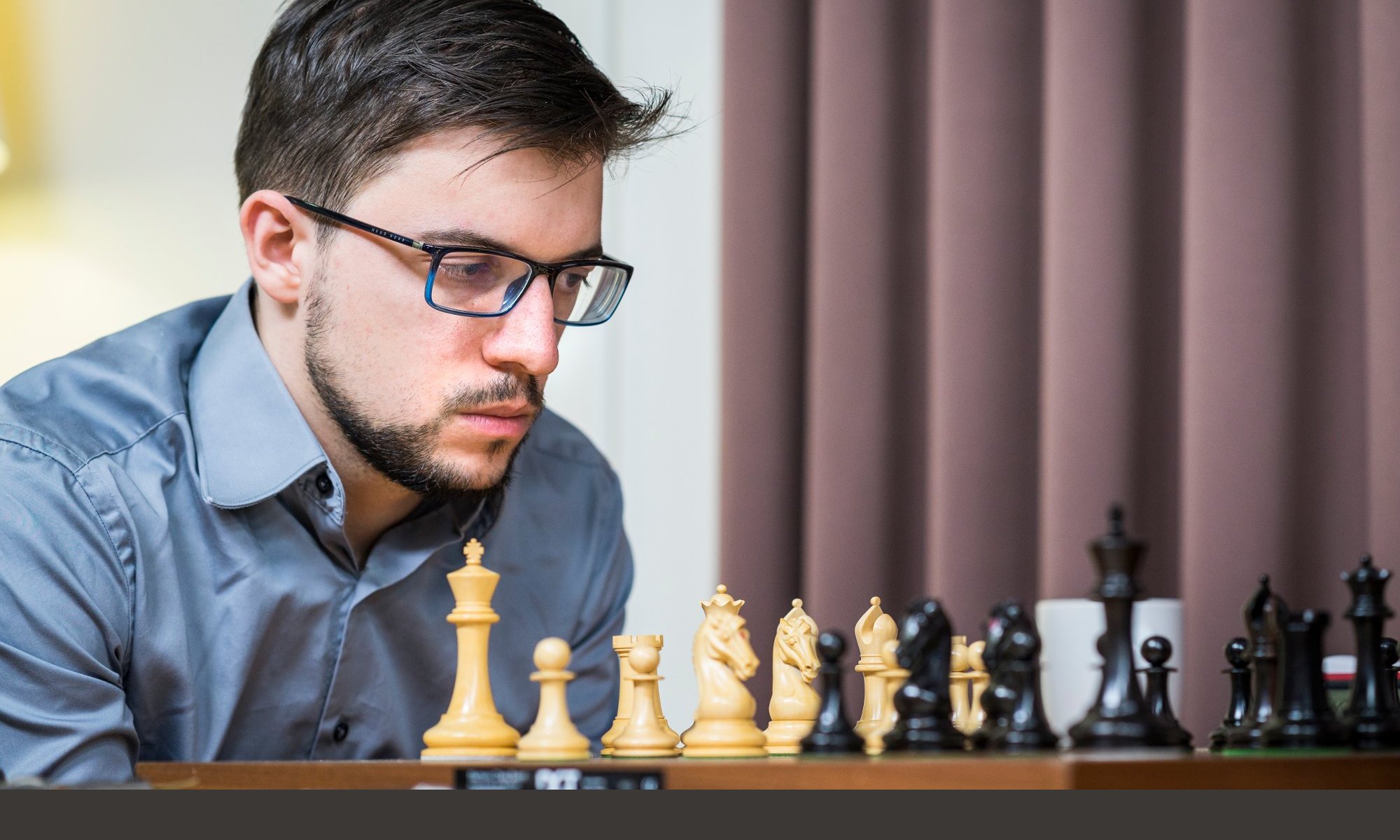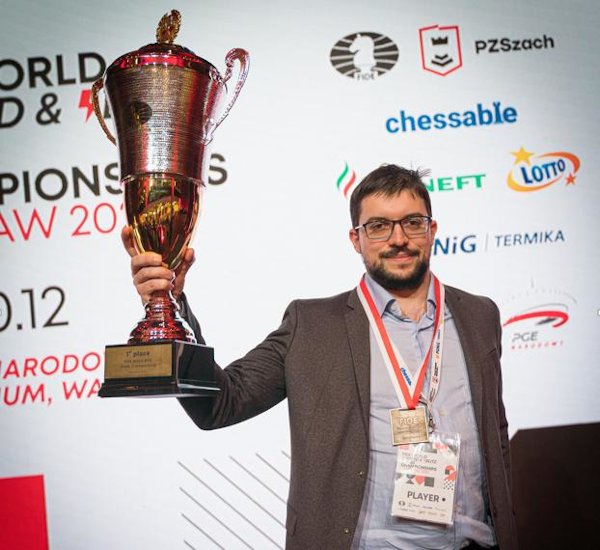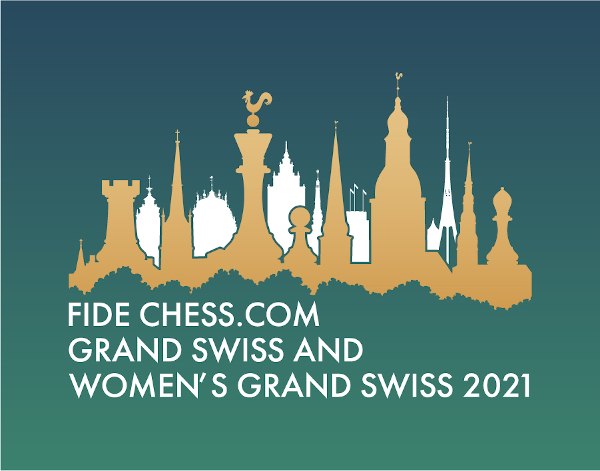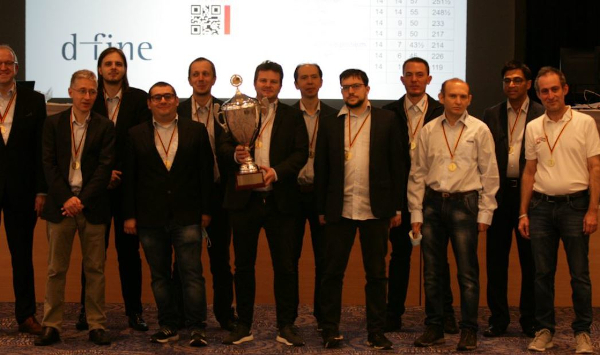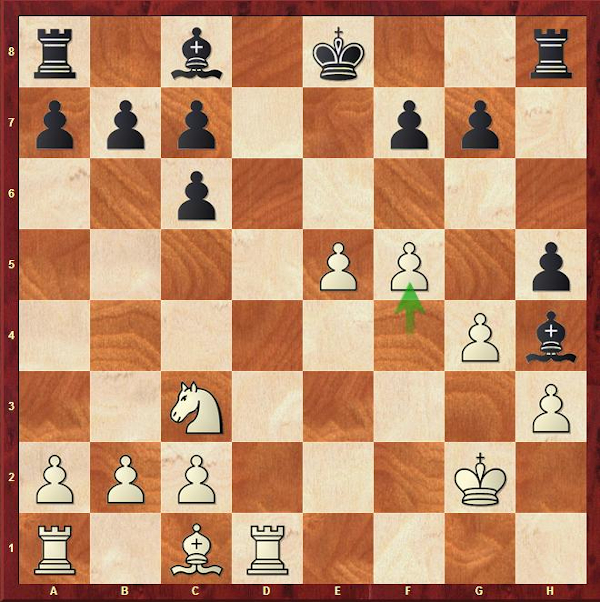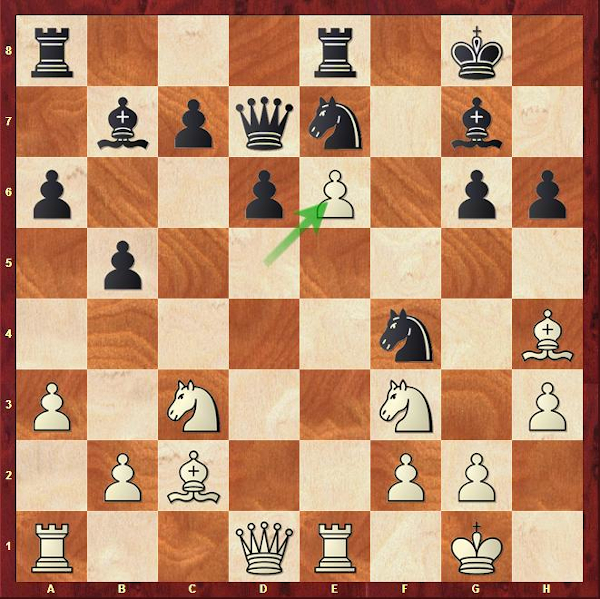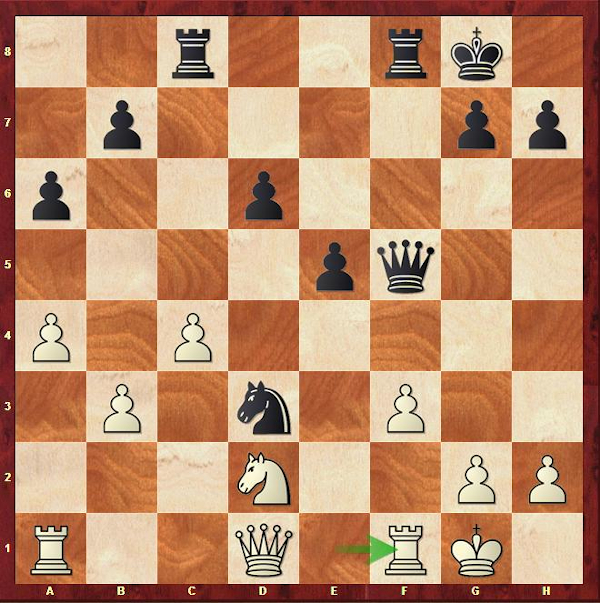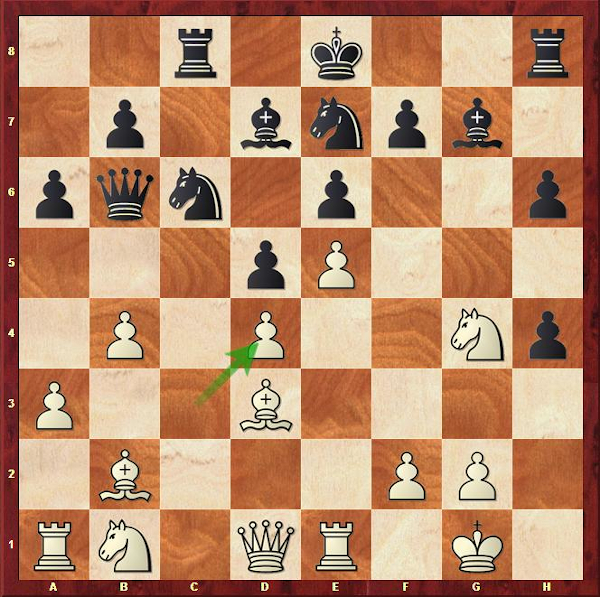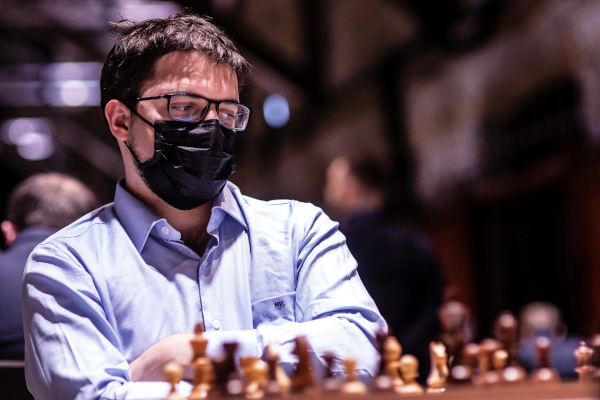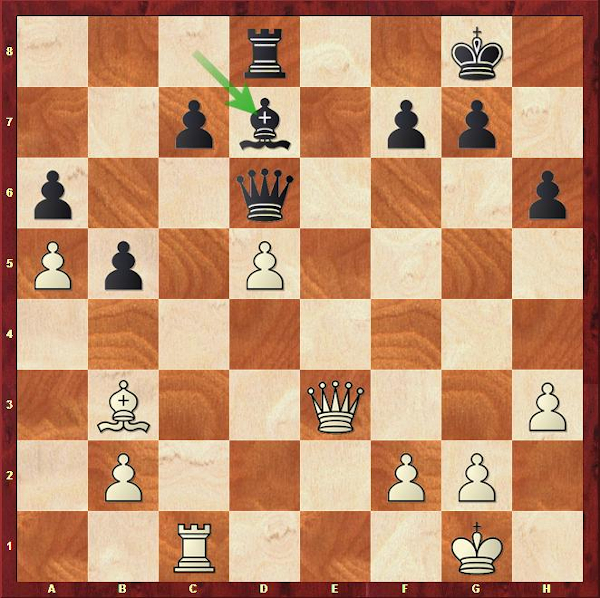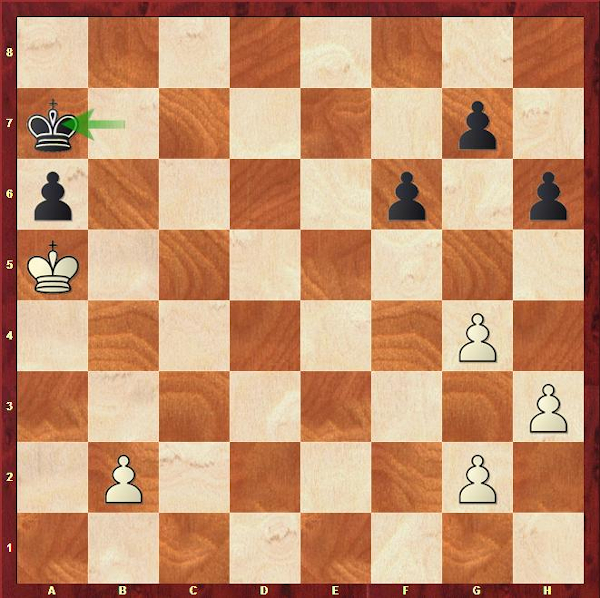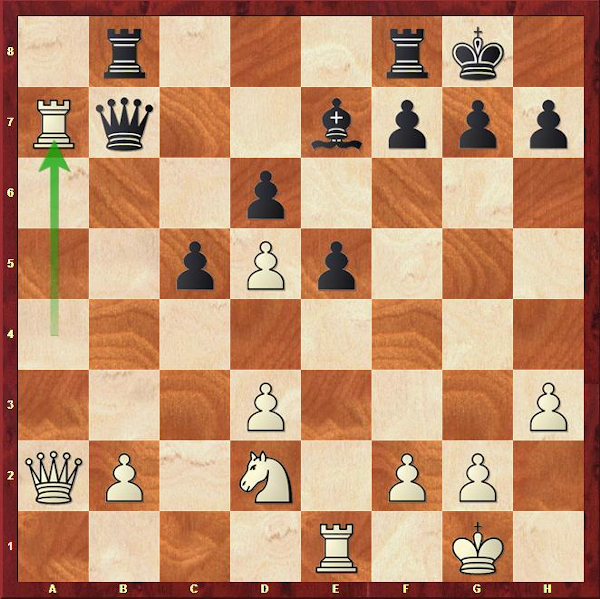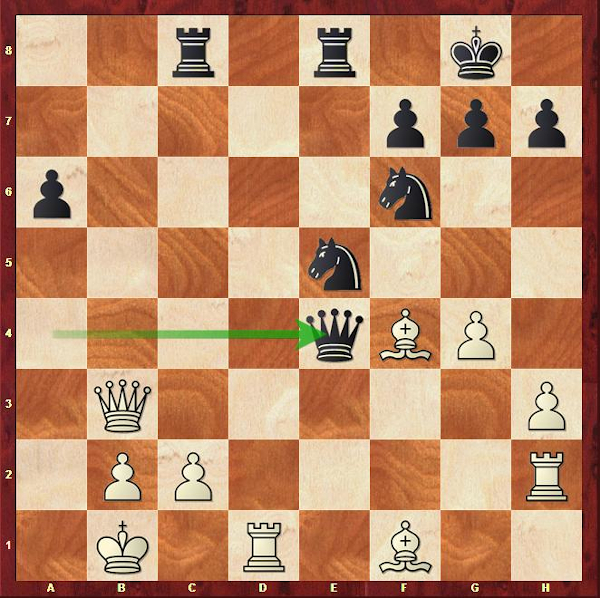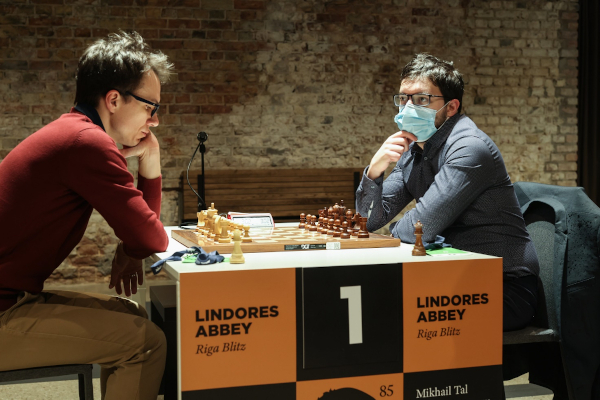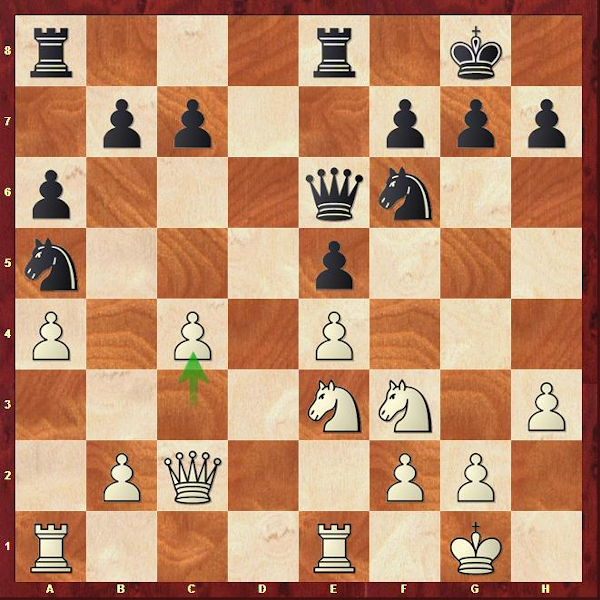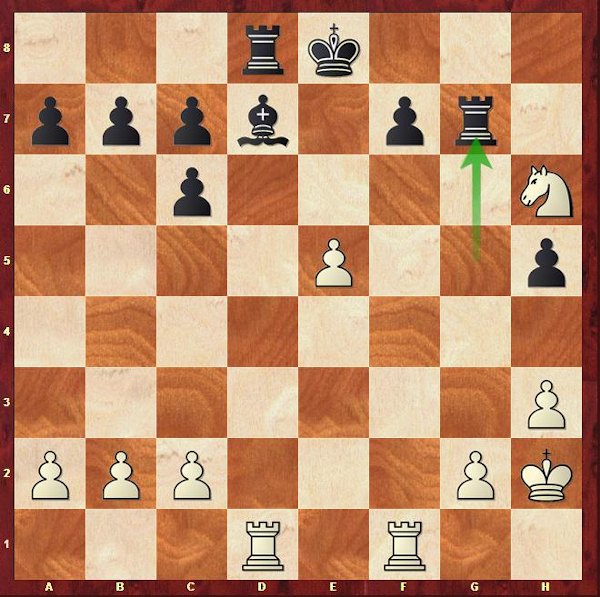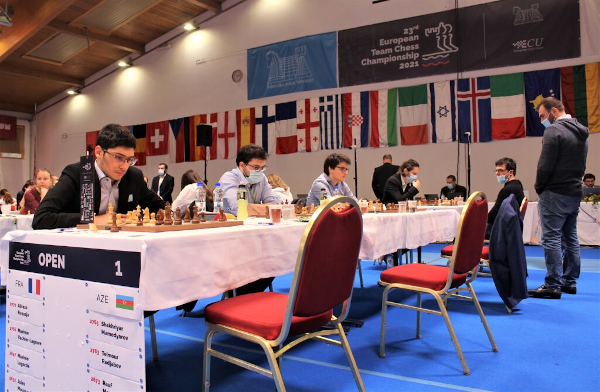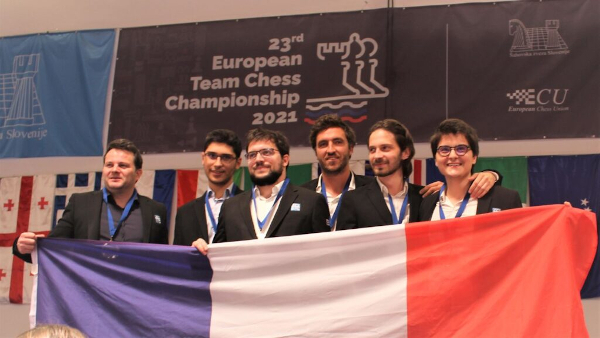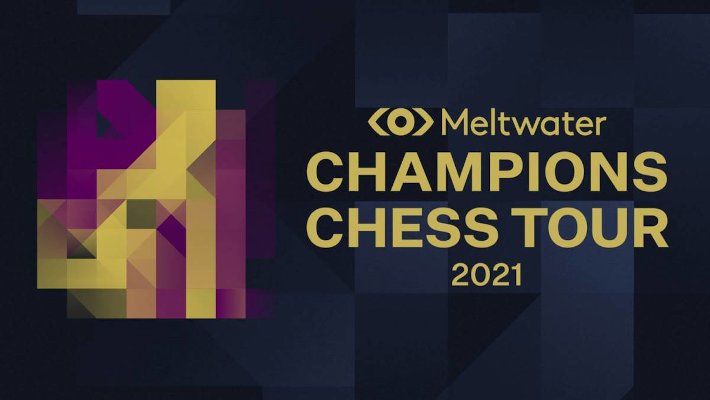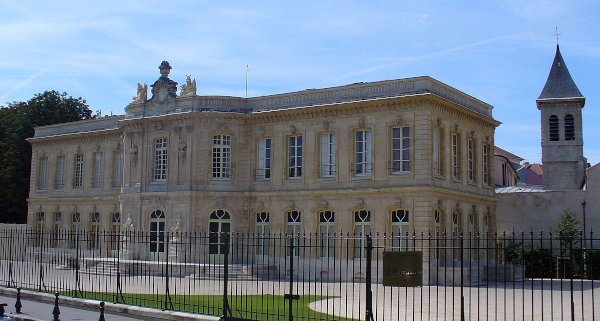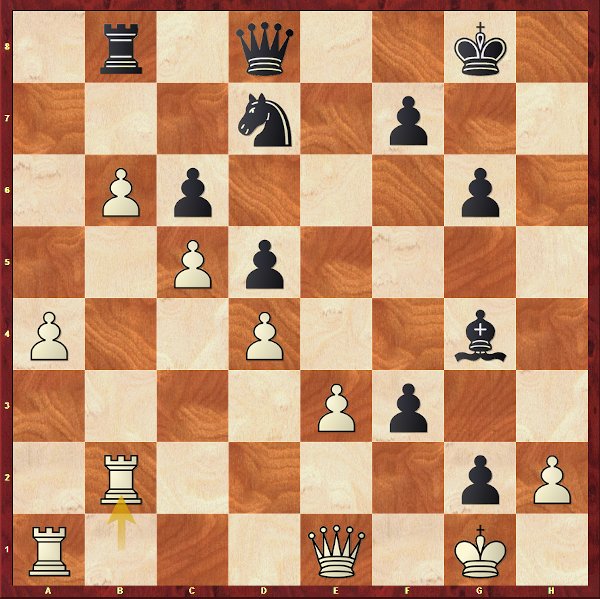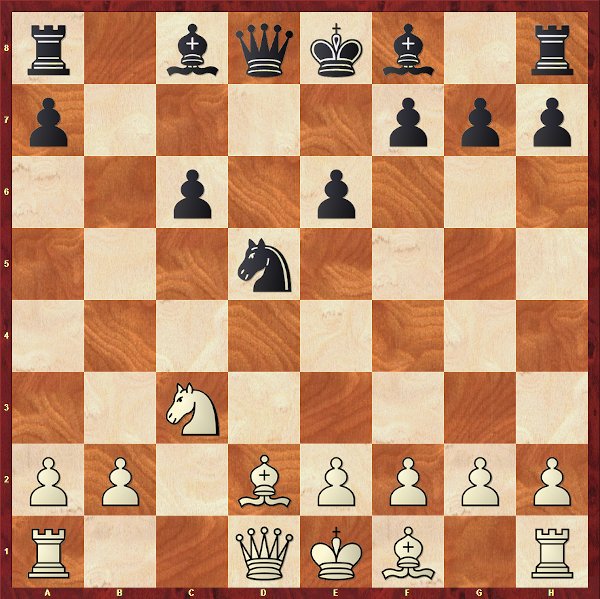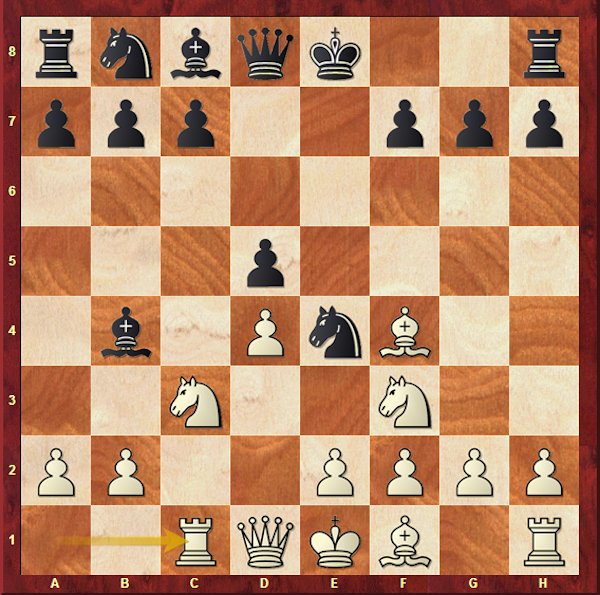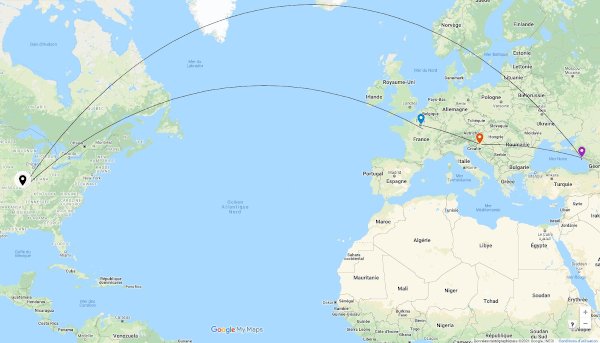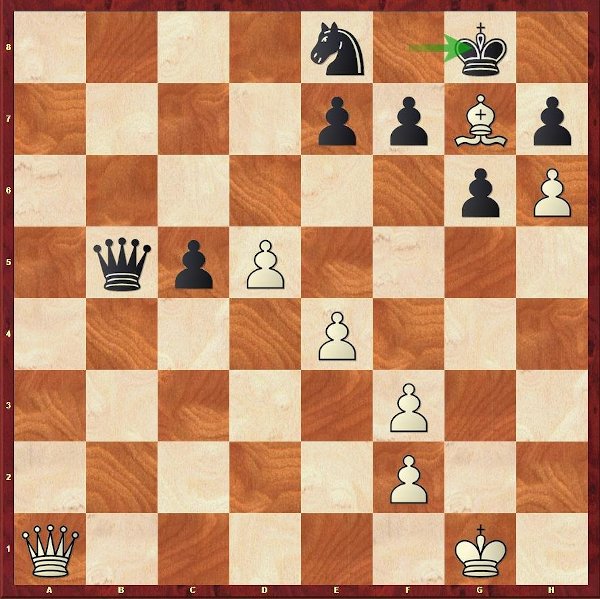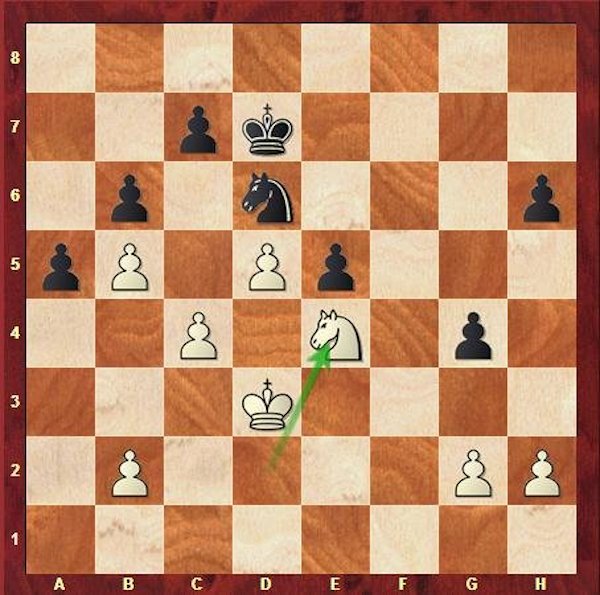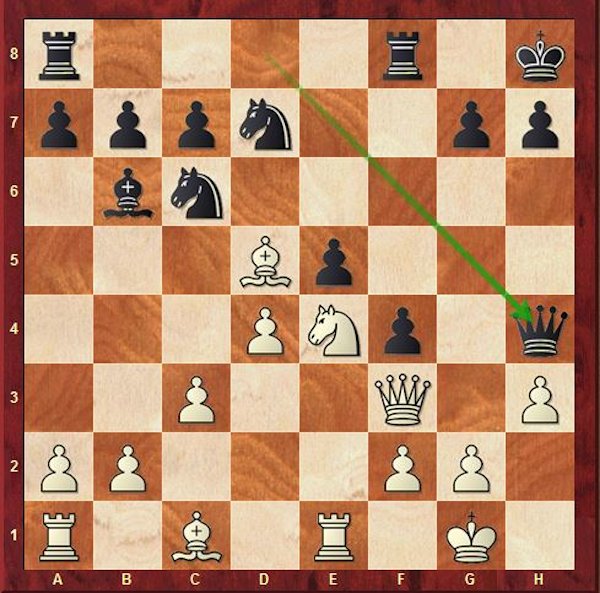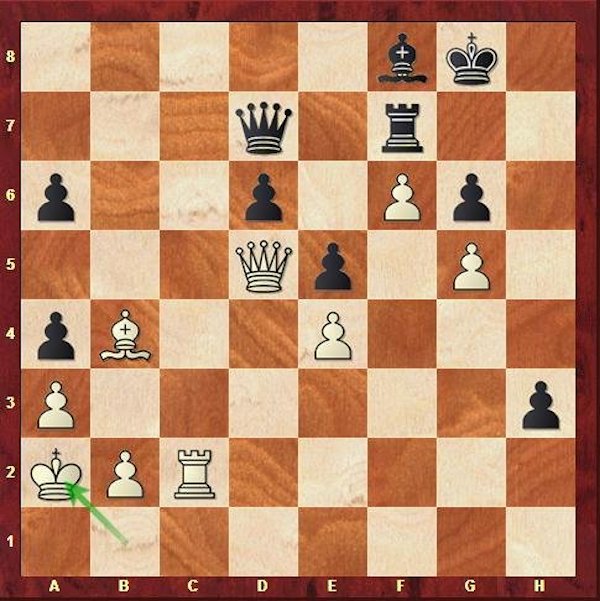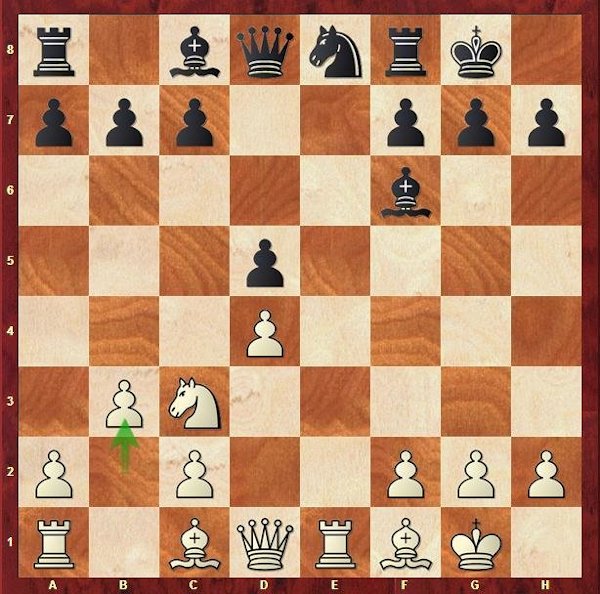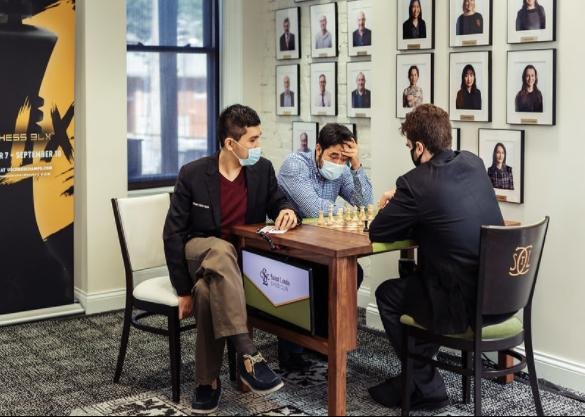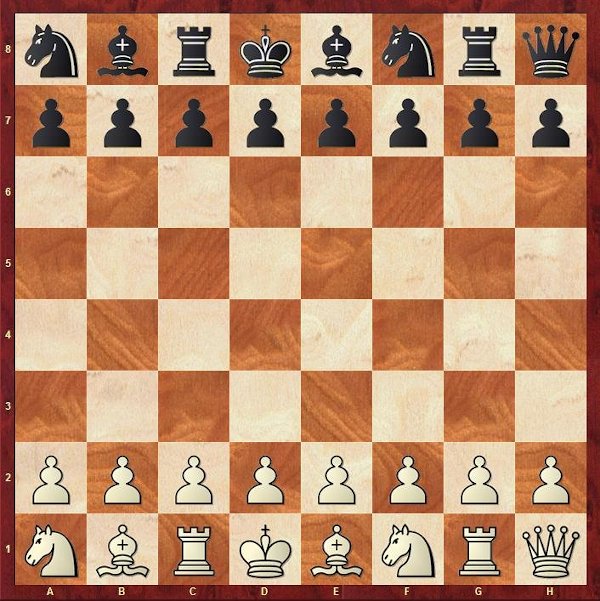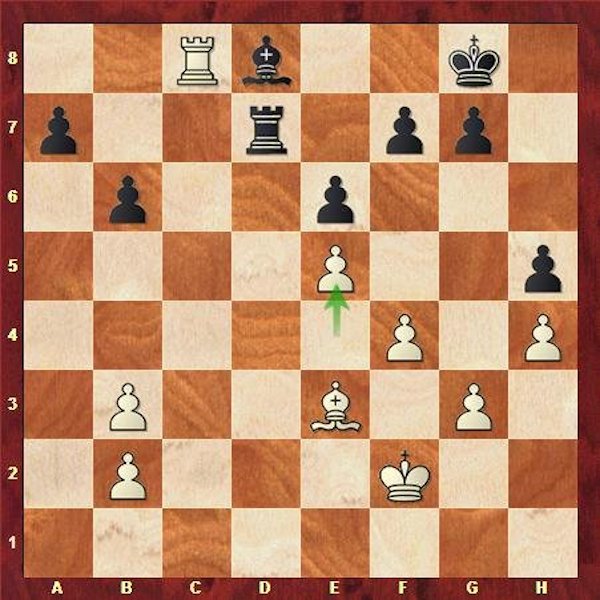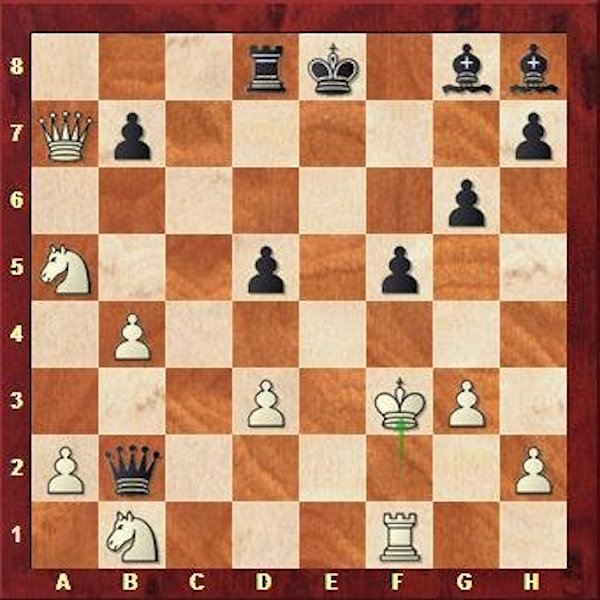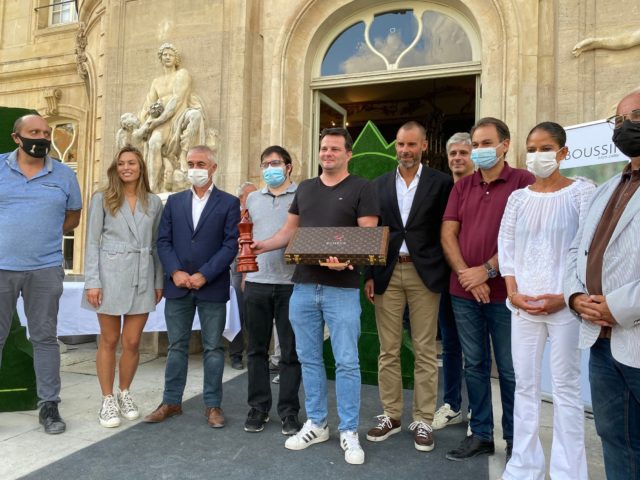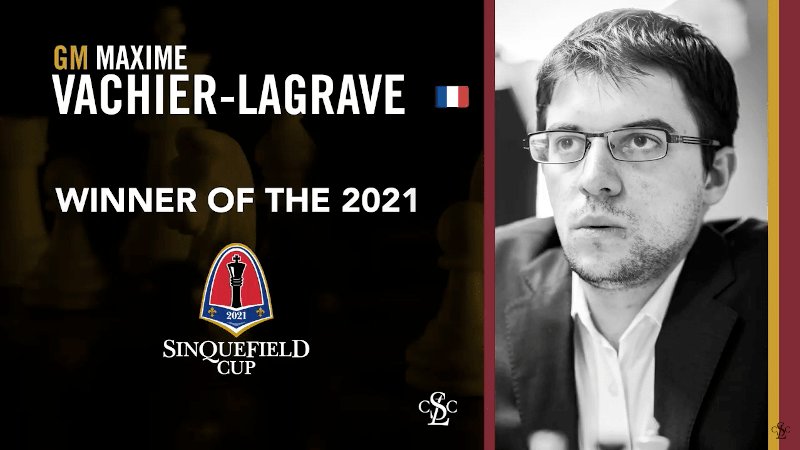I prepared myself quite seriously for the Rapid & Blitz World Championship, which is one of my favorite tournaments; preparation of openings and training games of course, but also physical and mental preparation. The departure for Poland – instead of Kazakhstan initially planned, which allowed me to go to -5° instead of -25° 🙂 – was scheduled early in the morning on December 25th. So, no family Christmas…
At the airport, I bumped into Samy Shoker, the Franco-Egyptian Grand Master whom I had not seen for a long time, and who is now based in New Caledonia, after having spent some time in Uzbekistan! I also met other Frenchmen in Warsaw, notably the Franco-Algerian GM Bilel Bellahcène and WGM Nino Maisuradze.
The organization did pretty well at the beginning, it’s only later that things went wrong – see my tweets 🙂 . I quickly got into the swing of things by reviewing the openings I had planned to play, especially the French and the Queen’s Gambit accepted, which gave half-hearted results.
RAPID TOURNAMENT
The competition was held in the PGE Narodowy stadium, which hosts the matches of the Polish national football team.
The first day started very badly, with a big miscalculation against Durarbayli (2615), which forced me to take a draw after 15 moves with white. Even if I finally scored 3.5/5 that day, my play was still quite messy.
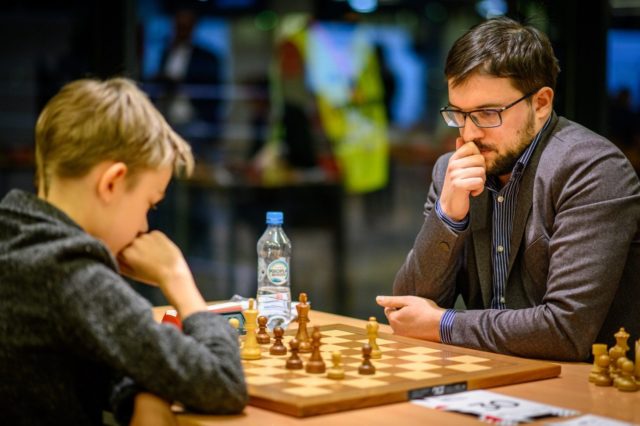
On the second day, I lost from the opening to Volokitine (2677), a game that shows things weren’t going well:
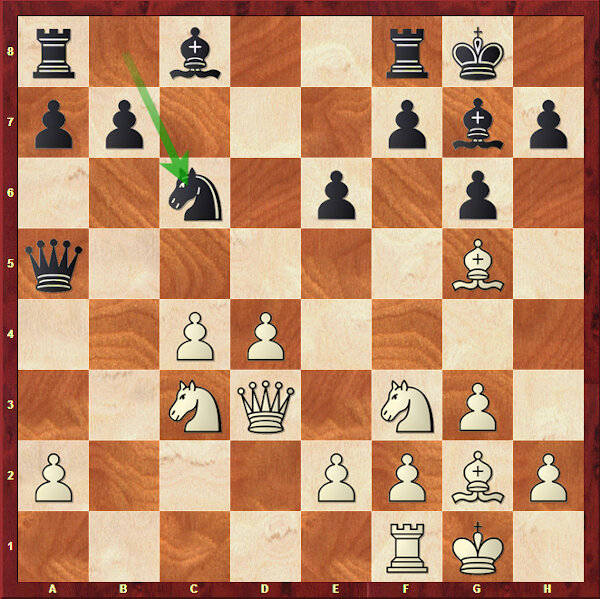
Because losing this position, with ten minutes against one, by forgetting that black threatens to take on d4 (18.Rb1? Nxd4!), that will take some beating!
I still finished this second day at 2/4, missing a nice win against Ponkratov (2641):
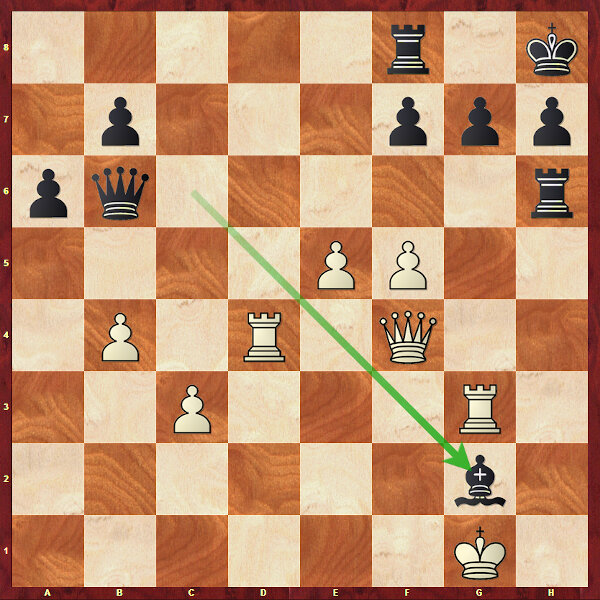
Instead of taking back on g2, the Russian played the intermediate move 36.f6? which should have been refuted by the aesthetic 36…g5! 37.Rxg5 (37.Qxg5 Rg6) 37…Bd5! and white is a piece down with no more attack.
On the third and last day of the Rapid tournament, it was already much better. I scored 3/4, with two good wins against Puranik (2604) and Petrossian (2573), and showed a stubborn defense in the last round against Fedoseev (2704).
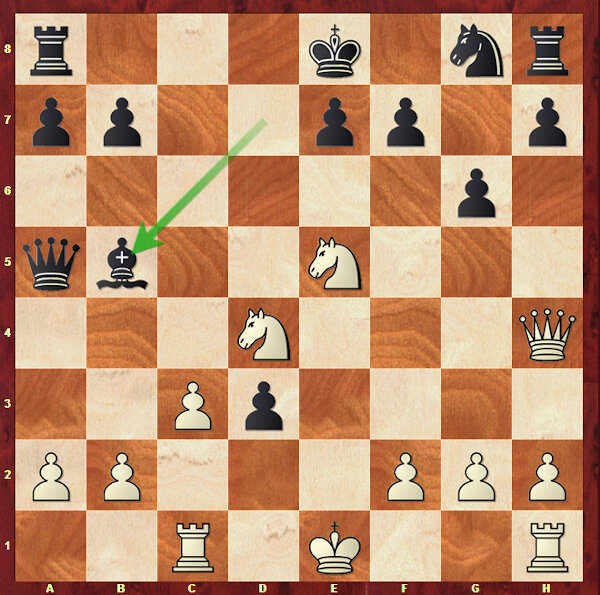
Here I played 16.Rd1? and after 16…Ba4! black took the advantage. Instead, the machine instantly shows that White had a move at his disposal, admittedly a counter-intuitive one: 16.Qg5! with the idea 17.Nc4, even after 16…f6. The kind of move not to be found in Rapid chess, and that I could only imagine working out in an exercise, or in a classical game possibly.
Clearly, the end of the Rapid tournament made me believe I could gain momentum, despite the rather mediocre final result (17th with 8.5/13).
So I decided to play a few training games, in order to prepare myself for the two days of blitz to come. Deep inside, I knew that I was capable of winning it, based on my previous results, and especially my silver medal in 2015, after I had a 1.5 point lead with 4 rounds to go !-) .
Before moving on to the Blitz tournament, a quick word of congratulations for Uzbekistan’s Abdusattorov, surprise winner of the World Rapid championship at only 17 years old. Uzbekistan is going to become a chess power to be considered, because Sindarov – who is just 16 years old – will also prove his skills by finishing 8th of the blitz tournament…

BLITZ TOURNAMENT
After a first win against Krasenkov (2576), I had to content myself with a half-point against Vastrukhin (2376):
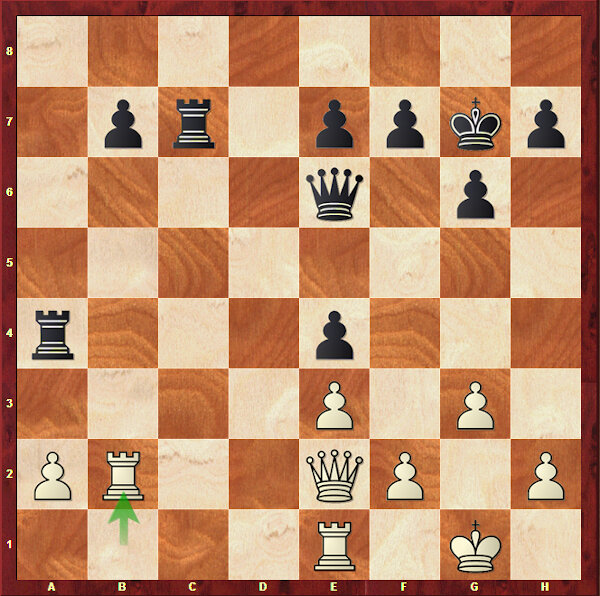
An instructive type of position, I got the same kind against Kravtsiv a few rounds later. Even though it is objectively very advantageous, perhaps even winning, this position one pawn down is much easier to play in defense. Sure in a classical game I could have pressed, but in blitz I couldn’t find the resources. White has no weakness other than his missing pawn, and his plan is clear; do nothing 🙂 and let black tear his hair out to make progress. On my side, I have to find something concrete, while always watching my b7 and e4 pawns, and also preventing the exchange of the queenside pawns: it’s just very difficult.
Then, a victory against Cheparinov (2664), but not without having experienced quite a scare:
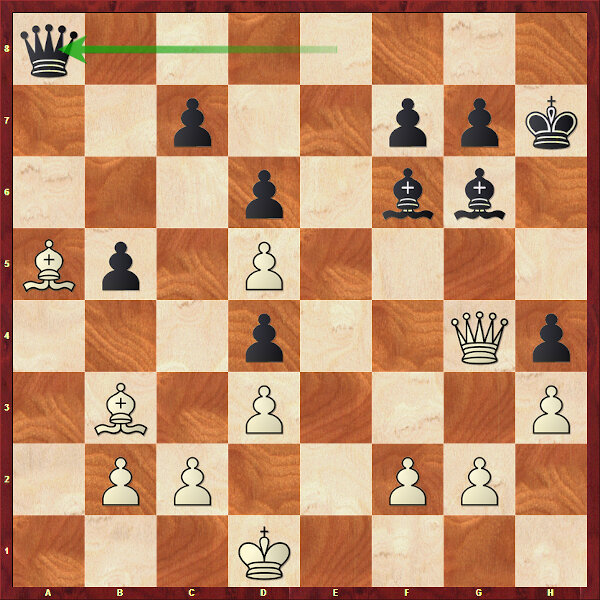
Here, I had to content myself with 28.Bd2. Instead, I played the natural 28.Bxc7? which loses in an incredible way: 28…Qa1+ 29.Ke2 Kh6! (and not 29…Qxb2? as played by the Bulgarian, because after 30.Bxd6, the d-pawn will be decisive while the Bishop comes back to defend the black squares around the King) 30.f3 (from a distance, I had seen 30.Bxd6 Bh5 31.Bf4+, completely forgetting 31…g5!) 30…Qg1! and the attack on the black squares is decisive.
In round 4, I had my first setback against Vidit (2727).
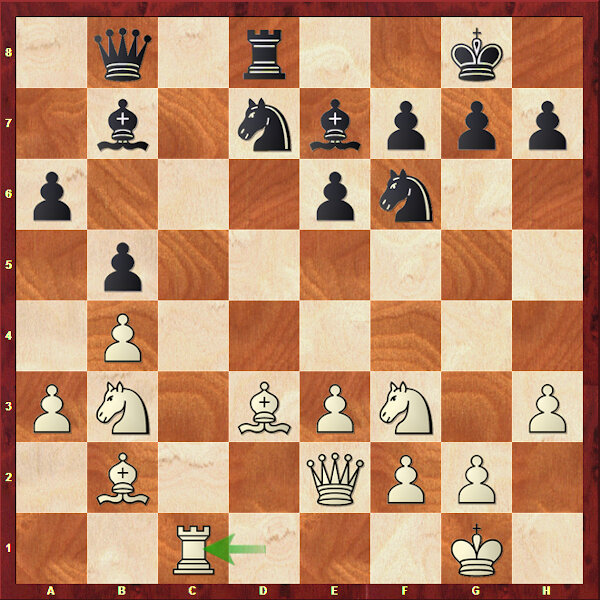
Here, instead of the normal 18…Rc8 with equality, I thought I was being clever by opting for the sequence 18…Bxf3? 19.Qxf3 Ne5 20.Bxe5 Qxe5. I believed that by attacking the Bd3, and threatening …Qb2, or even …Bd6, my position would be sound. In reality, after the simple 21.Nd4!,black’s position becomes very difficult, even almost losing in practice: the c-file, the weakness of the c6-square and the a6-pawn are terrible.
This sequence still shows some shortcomings in my handling of new openings like the Queen’s Gambit Accepted 🙂 . It is certain that I do not have the same level of knowledge and understanding in this type of position as in those resulting from the Grunfeld…
Against Antipov (2615), I was hit by blindness in the ending, after a technical game that I had mastered well.
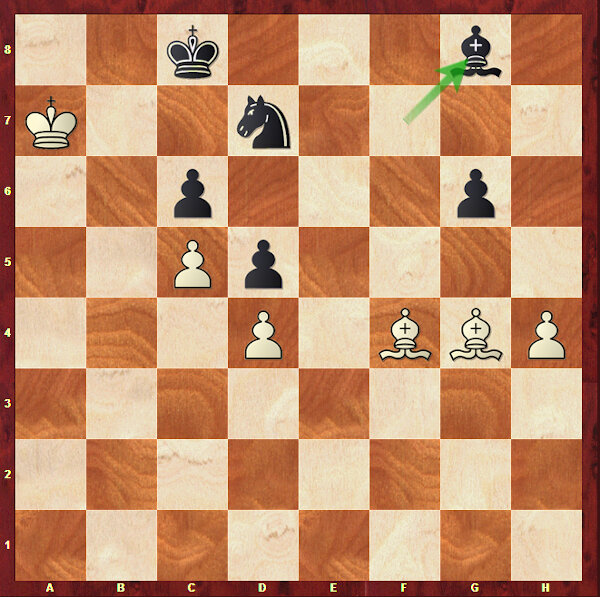
Here, instead of 64.Bd2, I could directly play 64.Be2! Be6 65.Ba6+ Kd8 66.Kb7 and black’s position collapses. A simple win that I managed to totally overlook several times, obsessed as I was with the pin on the Nd7.
After a win against Dudin (2474), I had a long theoretical debate on the Najdorf against Sychev (2550), who ended up losing on time in a tough endgame.
Which brings me to a general comment about the overall level. Clearly, the players, including those in the pack, have made a lot of progress in blitz. You can feel that there had been a lot of practice online and that almost everyone was ready to play theoretical lines, without any complexes! And in addition, there were far less blunders committed overall; for me it is obvious if you compare to the 2019 or 2018 editions for instance.
After a win against Timofeev (2572) who was too willing to trade pieces to a draw in an even position, then came the first big turning point for me, with this incredible loss against Amin Bassem (2680).
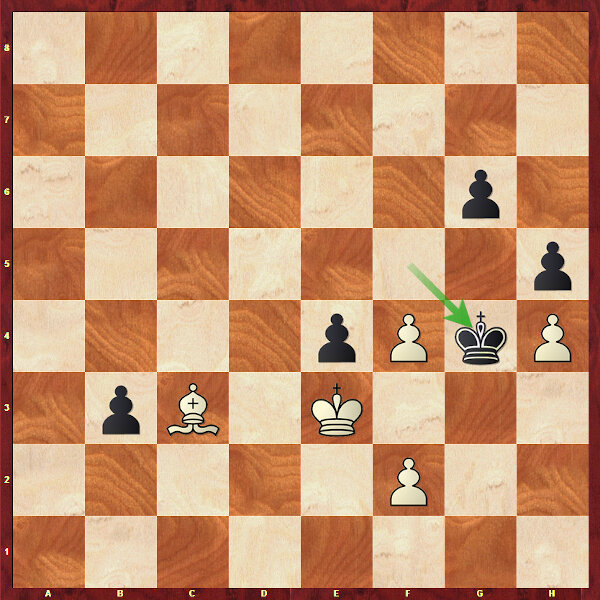
I was happy with the game. I thought it was pretty well under control since the beginning. And I felt that this endgame should be a complete win. Unfortunately, I didn’t find the forced line 64.Bf6! Kf5 65.Be5 Kg4 66.Kxe4 Kxh4 which gains a clear tempo over the line in the game: 67.f5 gxf5+ 68.Kxf5 Kh3 69.Kg5 h4 70.f4 Kg3 71.f5+ and curtains.
Instead, I played 64.Kxe4? directly, and after 64…Kxh4 65.f5 gxf5+ 66.Kxf5 Kh3 67.Kg5 h4 68.f4 Kg3 69.f5 (without check!) 69…h3 70.Be5+ Kg2 71.f6 h2 72.f7 h1=Q 73.f8=Q Qc1 I decided to try my luck a little bit more: 74.Bf4 Qc2 75.Qa8+ Kf2 76.Qa7+ Ke2 77.Qe3+ Kf1 until the incomprehensible hara-kiri 78.Bg3?? b2 79.Qf3 Kg1 80.Bf4 Qg2+ 0-1. A very bitter pill to swallow…
Still reeling from this defeat, I lost again, and this time in 26 moves, to Maghsoodloo (2701). However, I was much better after the opening with black!
Fortunately, there were still two rounds left in this first day, and I had the opportunity to double white and win both games, allowing me to stay alive in the tournament; first against Matlakov (2674), then against Zvjaginsev (2599).
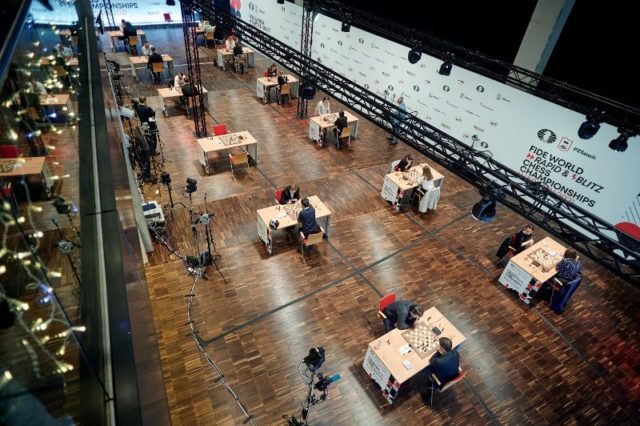
When we arrived for the second day of blitz, we learned that several players had tested positive for Covid, including Nakamura. I really thought the tournament was going to be stopped, but many players were convinced that the organizers and Fide would do everything to make this last day go through. That’s what happened in the end, just one hour behind schedule.
Clearly, the Covid protocol in FIDE competitions will have to be reworked in the direction of a greater firmness because there was a lot of uncertainty and unsuitable situations, for example – but not only – in the buses put at the disposal of the players…
So, I started with a bad game against Gelfand (2663), after having done a bit of a mess in the opening. I still got a Queen’s endgame with 3 pawns against 4 on the same side, and just when I had a tough choice to make, I checked my clock and found that his was at 0:00 🙂 . « Thanks for the gift, Boris, I’ll try to enjoy it! ».
After a quick draw against Giri (2772) where we took 20 pieces in a mere 21 moves 🙂 , I faced the Uzbek Sindarov. An ultra-complex game from a fashionable variation of the Open Spanish finally led to the following position:

Here, black had to play 38…Qh1+ 39.Kg3 Qe1+ and the position remains very complicated to play. Instead, Sindarov chose 38…Qd3+? 39.Kh2 e3, which doesn’t work because of 40.Qe5! e2 41.Bf8, forcing 41…Qg6 42.Qxe2 and white wins.
After a draw against Kravtsiv (2604) where I couldn’t win a Rook ending a pawn up, I played my first really decisive game against Aronian (2772), who was leading the tournament at that time, two points ahead of me.
And this game did not fall short, with the advantage going back and forth from one side to the other, from start to finish!
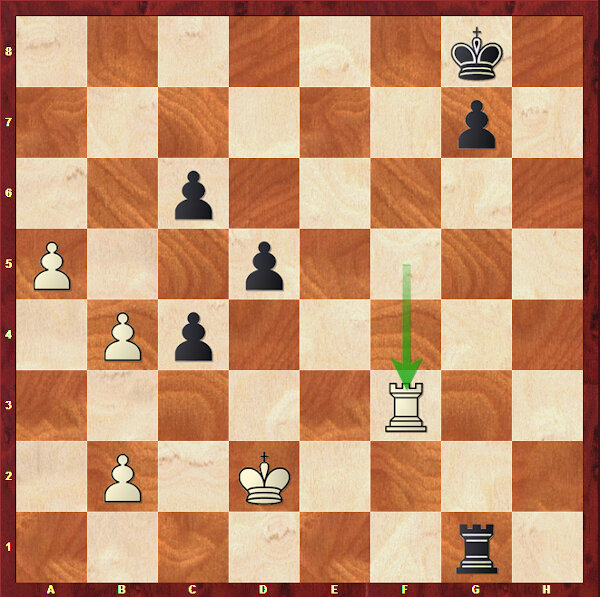
It was Levon who made the last mistake here, but he had been playing on the two-second per move increment for a while. Necessary was the counterplay created by 54…d4 55.a6 (55.Ra3 Rg2+) 55…d3! and the fight continues in the endgame. But Levon opted for 54…Ra1? after which White has a trivial technical win with 55.Ra3 Rf1 56.a6 Rf8 57.a7 Ra8 58.Kc3 Kf7 59.Kd4 and black’s King is too far away.
Generally speaking, in this blitz tournament, I recovered my main quality of being able to put a lot of pressure on the clock; this is for example what happened in the next game against the Maroczy Bind of the new Indian prodigy Erigaisi (2629), which was a clean performance by me:
We then arrived in the money time, and with three rounds to go, I was paired with white against Dubov (2749) who was the new leader of the tournament, half a point ahead of Aronian and me.
The opening went badly and to my surprise, Dubov offered me a draw in the following position:
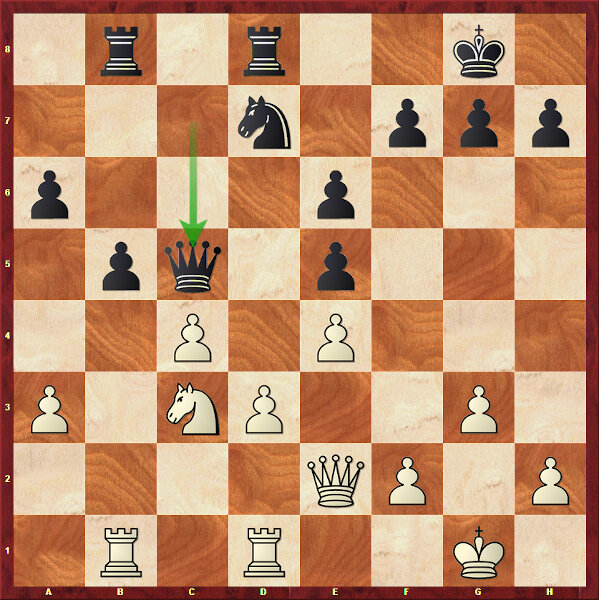
Of course, I didn’t want to accept and almost played 18.Rb4, but considering the position again, I finally thought it would be much more reasonable to comply 🙂 .
After all, there were still two rounds left, and anyway, I think you have to accept it when things don’t go as planned…
I then made a solid draw against Artemiev (2700) at the penultimate round, allowing a large regrouping in the lead, with the return of Duda, and an exceptional remontada of Alireza!
With 6 players at 14 points going into the final round, I had the honor of being underpaired against Carlsen (2856), who was all alone at 13.5. Obviously, we were both in a must-win situation.
The opening didn’t go too well because I missed a strong move for black. Nevertheless, the type of position that resulted, while certainly objectively favorable for black, was actually perfectly suited to my situation!
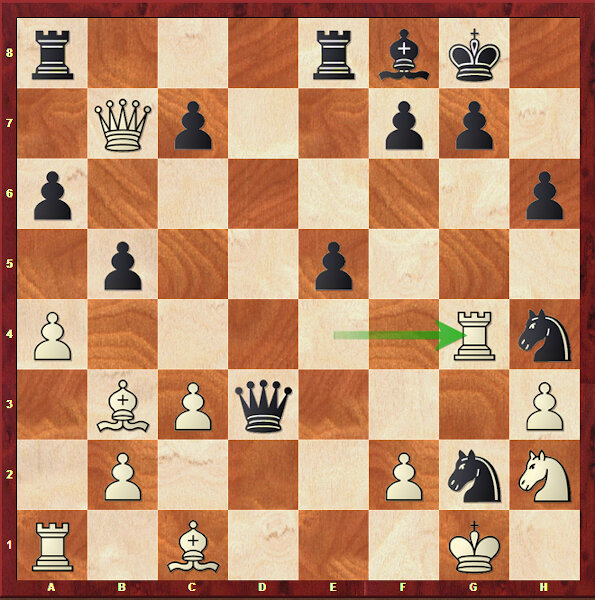
Here, Magnus thought for a really long time, 1’17” or an eternity at this rhythm; the proof that he was probably not comfortable… For me, the obvious move was 21…bxa4! which had the advantage of deflecting one of my pieces. 22.Rgxa4, you really don’t want! 22.Raxa4 Qb1 neither… That leaves 22.Bxa4, which I would have played reluctantly.
Instead, the world champion finally opted for 21…Qxh3?, a move which leaves me too many options, one of which wins immediately – to everyone’s surprise! Indeed, if 22.Qd5! had been chosen, Black could no longer have protected f7 without losing the Ra8; and he could have done absolutely nothing with his Queen and two Knights around my King! Unfortunately, I didn’t see this retreat move either, and I played 22.Rg3? instantly, letting black taking over. Under great time pressure though, Magnus finally went down and let me organize a mating attack with Queen and Bishop!
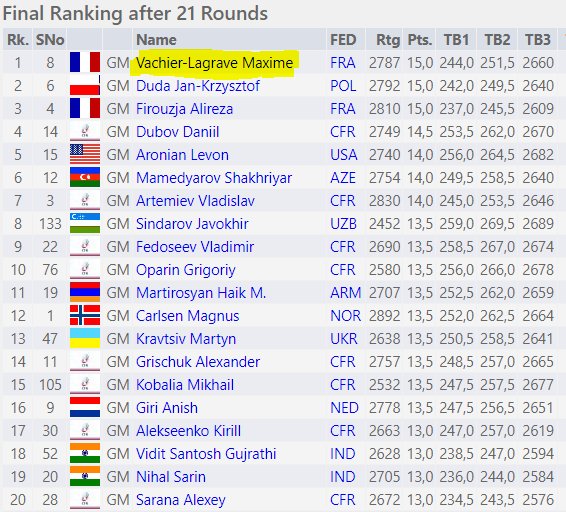
TIE-BREAK
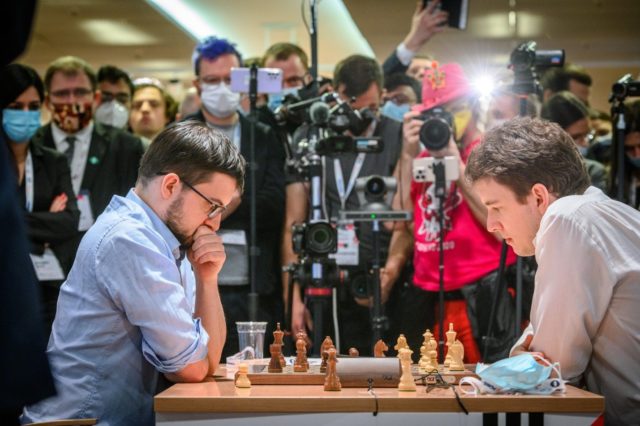
Duda and Firouzja also won their games, so all three of us finished at 15 points. I had the best Buchholz, but the rules called for a tie-break on the board between the first two players, which unfortunately eliminated Alireza from the title race. After a stormy end to the tournament, which he is now famous for, he still finished in an excellent 3rd place.
So I faced the Polish Duda, who was playing at home, for the world title. The first series of two games was played in a very serious way on both sides, and ended in two logical draws. No Armaggedon in Warsaw, the rules specifying it would be sudden death instead! The title would now go to the first winner, the one who was ahead in the Buchholz having the advantage of starting with white. So I had the opportunity to strike first!
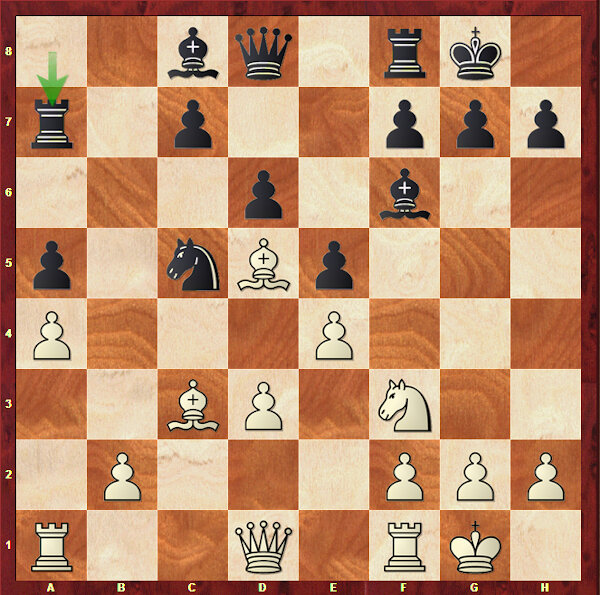
I repeated the same anti-Marshall line as in our first blitz game, up to the diagrammed position; mainly because I liked the position I had gotten. In the first blitz, I played 17.d4 exd4 18.Nxd4 Bd7 19.Qc2, but after 19…Qe8!, black had solved all his problems. In the short break of a few minutes before the game, I mulled over the position and found out that 17.Qc2!? would be very interesting: I’m threatening 18.Bxe5; on the natural 17…Bg4?! as in the game, I had anticipated 18.d4! exd4 (18…Bxf3 19.dxc5! might be what Duda forgot) 19.Nxd4 Bd7, and I’m a tempo up compared to the previous game, a privilege that allowed me to get a nice edge after 20.Nb5 Bxb5 (20…Ra6 is better, but hardly « human ») 21.axb5 Bxc3 22.Qxc3.
From a practical point of view, 17.Qc2!? was therefore an excellent choice, even if I saw afterwards that the machine still prefers 17.d4 over it, because it considers that black is ok after 17.Qc2!? Ne6! (the anti-d4 remedy); I had seen this Knight move, but I was not convinced that black wanted to have his Knight on e6 and block the Bc8.
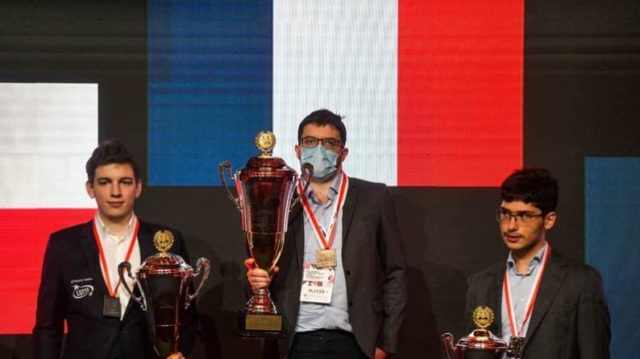
This World title comes at the right time to close a year 2021 in half-tone, with notably a very difficult first semester (nightmarish Tata Steel, the disappointment of the Candidates, failure in Bucharest, and very dubious online tournaments). Fortunately, I was able to recover from the summer, mainly by winning Zagreb and the Sinquefield Cup, and finally this World title in blitz!
January and February will be very light for me, the priority now being the preparation of the Fide Grand Prix tournaments, which will offer the last two qualifying spots for the Candidates Tournament in June.
As for me, I will play the 2nd tournament (in Belgrade from March 1st) and the 3rd (in Berlin from March 22nd).
Maxime’s games at the Rapid world championship:
Maxime’s games at the Blitz world championship:
The first days of 2022 saw Maxime being widely solicited by the media, the ransom of glory for a newly crowned world champion! The official reactions were also up to the task, especially with another Frenchman on the World podium… Maxime and Alireza were invited the next day by the French Ambassador in Warsaw, while the ministers Jean-Michel Blanquer and Roxana Maracineanu sent their public congratulations, before the Prime Minister Jean Castex followed suit.
We will also note that the President of the Republic Emmanuel Macron was not to be outdone, as he opted for a private message sent to the new World champion 🙂 .
